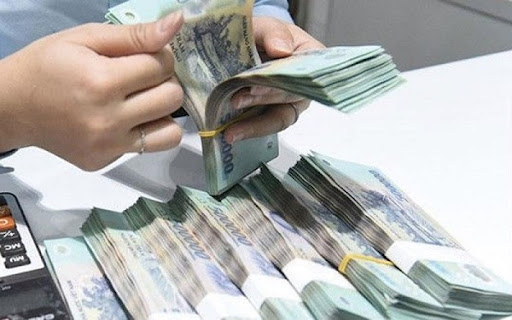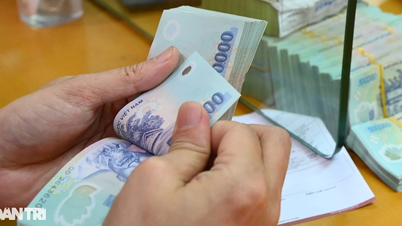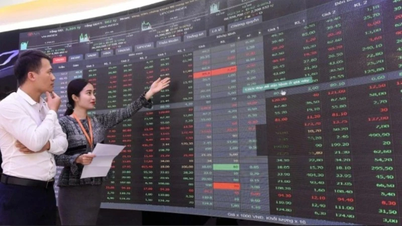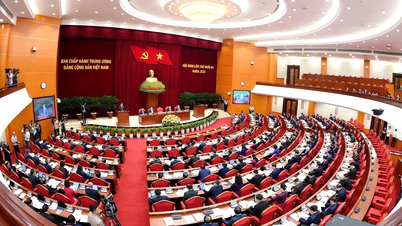 |
Credit may increase 18-20% this year
According to analysts, credit growth in the banking sector could accelerate to 20% this year. The main driving force comes from low interest rates, public investment, real estate boom and policies supporting the private economic sector. The main driving force from low interest rates stimulates credit demand, especially in the context of increased public investment, real estate legal issues being resolved, and orientation to support the private economic sector.
In addition, the State Bank of Vietnam (SBV) has proactively loosened the credit ceiling for banks from July 2025 and large banks receiving mandatory transfers will benefit greatly from the credit room policy.
Meanwhile, the industry's net interest margin (NIM) is expected by VCBS analysis team to bottom out in the second quarter and gradually recover in the second half of the year, but the recovery level is unlikely to be equivalent to the second half of last year.
VCBS believes that monetary policy continues to loosen, system liquidity is stable. In particular, credit demand is recovering, especially in the segment and long-term home loans, lending interest rates are showing signs of increasing.
Regarding asset quality, VCBS expects the bad debt ratio to gradually decrease and bad debt collection activities to be more favorable. The VCBS report said that the potential bad debt ratio has gradually decreased for 4 consecutive quarters, helping banks reduce the pressure to transfer debt groups. The analysis team expects the restructured debt to be transferred to the normal group after the challenging period.
In particular, the legalization of Resolution 42 on bad debt handling and the warming real estate market will help banks speed up the process of handling secured assets, especially small and medium-sized banks with high bad debt and receivables ratios.
Meanwhile, MBS experts believe that lending activities in the second half of 2025 will likely be boosted by many factors, helping credit growth reach an estimated 17-18% by the end of 2025.
By the end of the second quarter of 2025, the private banking sector achieved a credit growth rate of 11.9%, faster than the 7.8% of the Big 4 banking sector. Joint stock commercial banks actively reduced interest rates to promote credit to support the GDP growth target of 8% in 2025, helping credit to be pushed faster.
“Most banks will achieve their credit growth targets in 2025 despite pressure from declining NIM. In particular, banks with a high proportion of outstanding loans focused on public investment projects and SME loans; maintaining stable NIM and asset quality compared to the industry average in 2024 and Q1/2025 and having strong mobilization growth in Q2/2025 will be the banks that record stronger credit growth in the second half of 2025,” MBS experts commented.
Bank stocks are overvalued compared to the region.
Regarding profits, in the recently released Outlook report for the last months of 2025, Vietcombank Securities JSC (VCBS) forecasts that pre-tax profit growth for the entire banking industry in 2025 will reach 18%. In particular, the group of small-scale banks is expected to have the strongest growth rate (up 35%) with high credit growth and strong handling of bad debts.
For the dynamic private banking group, pre-tax profit growth is forecast at 20%, while the state-owned group is expected to increase by about 12%. Accordingly, dynamic private banks will benefit from policies to encourage the private economy and improve asset quality. This group also witnessed many outstanding stories such as IPOs, restructuring, and debt collection.
Although credit growth is slow, the group of state-owned banks has made a breakthrough after completing bad debt settlement, which is still an attractive opportunity in the last months of the year.
Meanwhile, MBS analysts forecast that listed banks' profits will increase by about 15% this year. The forecast of reduced provisioning costs is the main factor driving banks' profits to increase slightly compared to the previous time.
According to experts, the private banking sector will continue to lead, with net profit growth of 27.1% over the same period, far exceeding the state-owned banking sector which only reached 10.7% over the same period. Credit growth will be accelerated in the context of NIM recovery, helping the profits of joint stock commercial banks accelerate better than the state-owned banking group.
According to MBS analysts, currently compared to the valuation of banks in the region, the valuation of the entire banking industry in Vietnam is relatively higher than that of other countries in the region except Indonesia thanks to the high ROE level, thus narrowing the potential for short-term price increases.
"We believe that the positive performance of banking sector stock prices in recent times has been mainly driven by a favorable macroeconomic environment, loose monetary policy, legal changes to open up the real estate market and boost public investment. In addition, the expectation that the Vietnamese stock market will be upgraded in September also supports banking stocks due to the large capitalization and liquidity factors that suit the investment appetite of foreign investors. However, these favorable factors have been reflected in valuations, while the average profit growth of the whole industry is at a moderate level of 15%/20% in the period 2025 - 2026. Therefore, we lower our neutral recommendation for the whole banking sector," the group of analysts recommended.
Source: https://baodautu.vn/loi-nhuan-ngan-hang-tang-15-18-chu-yeu-nho-giam-du-phong-co-phieu-dang-duoc-dinh-gia-cao-d373601.html







![[Photo] Closing of the 13th Conference of the 13th Party Central Committee](https://vphoto.vietnam.vn/thumb/1200x675/vietnam/resource/IMAGE/2025/10/08/1759893763535_ndo_br_a3-bnd-2504-jpg.webp)




























































































Comment (0)